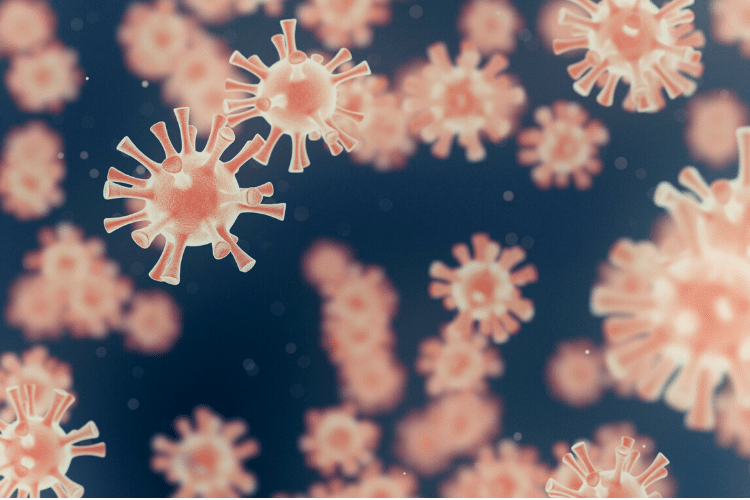None of the content in this post should be considered medical advice or treatment for COVID-19, hemochromatosis, or for any illness or disease. If you feel sick, seek medical help. If you think you may have contracted COVID-19, visit the CDC’s website for steps to take: https://www.cdc.gov/coronavirus/2019-ncov/if-you-are-sick/steps-when-sick.html.
UNDERSTANDING COVID-19
During a “normal” year, anywhere from 5% to 20% of Americans come down with the flu.
Although most people recover without any snags other than a few missed days of work or school, complications arising from the flu are the cause of 140,000 – 810,000 hospitalizations and between 12,000 – 61,000 deaths each year in the U.S. according to the CDC.
Well, 2020 certainly wasn’t a “normal” year.
And we definitely didn’t experience a typical cold and flu season.
All due to one infection: COVID-19
- CO = corona
- VI = virus
- D= disease
- 19 = 2019
How has COVID-19 affected us all?
Here’s what the experts say.

EXPLAIN THE TERMINOLOGY
COVID-19 is the name of the illness.
SARS-CoV-2 is the name of the virus that causes the illness, and it’s a type of coronavirus which is why some people call it “the novel coronavirus” or just “coronavirus.” There are other coronaviruses out there. For example, anytime you catch a cold you’ve most likely been infected with a coronavirus.

WHAT ARE THE SYMPTOMS?
While COVID-19 is caused by a coronavirus, NOT a flu virus, it creates similar symptoms to the flu like a fever, cough, and fatigue.
However, coronaviruses cause much more trouble with breathing than most flu viruses. Symptoms have been categorized in 3 tiers, says Dr. Shira Doron in an interview with NPR.
3 TIERS OF COVID-19 SYMPTOMS
MILD
Fever, shortness of breath, dry cough, aches and pains.
MODERATE
Fever above 100.4, chills, some difficulty breathing, dehydration (dry mouth, thirsty, headache, dizziness).
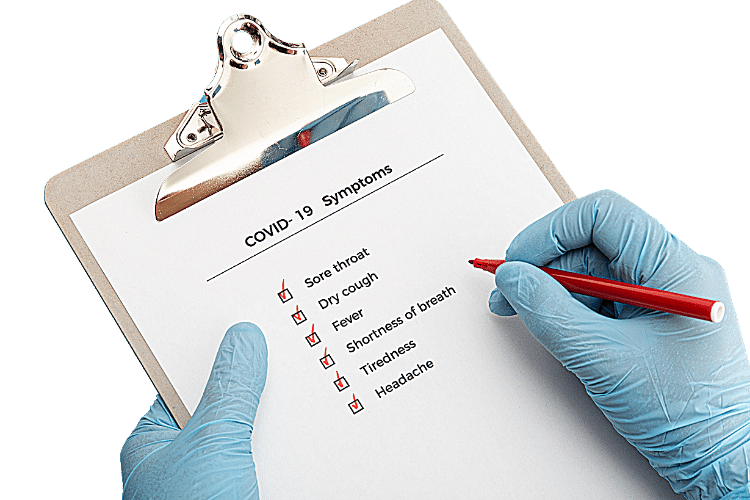
SEVERE
Pneumonia, secondary bacterial infections, virus may enter lungs and cause the body to go into an extreme inflammatory response, lack of oxygen in blood, organs may shut down.
The mild and moderate cases make up 80% of the total number of cases.
It can take anywhere from 2 to 14 days to show symptoms after you’ve been exposed, with most people showing symptoms around day 4.
You can start being contagious 3 days before you start to feel symptoms.
WHERE DID IT COME FROM?
We still don’t know.
There are two popular theories:
- The animal-transmission theory
- The lab-leak theory
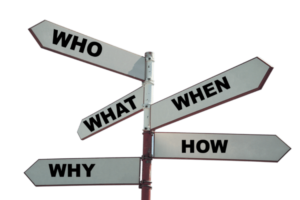
THE ANIMAL-TRANSMISSION THEORY
Some scientists are pretty confident that the virus originated from bats, making it a “zoonotic” illness, meaning it started in animals and then jumped to humans.
While these researchers aren’t 100% sure, one of their top guesses right now is that bats spread the virus to pangolins, highly trafficked animals. Scientists were able to find a virus in the lung tissue of pangolins that was 91% similar to SARS-CoV-2.
Even though 91% isn’t a perfect match, and there are probably some other players involved in the story, the theory goes that pangolins transmitted the virus to humans at a “wet market” – a market where perishable goods like fruits, veggies, and meat, as well as live animals are sold.
If you’re not familiar with wet markets, envision live animals crammed together in containers. This creates unsanitary conditions where the animals get coated in their own feces and urine. The stress of such an unnatural environment often makes animals susceptible to illness. The illness then spreads like rapid-fire amongst the animals due to to the fact that the creatures are so close together.
Wet markets are hotbeds for infection.
Despite their endangered status, pangolins are prized for their meat and many people believe their scales have medicinal properties, which is why they are one of the many animals trafficked and sold at “wet markets.”
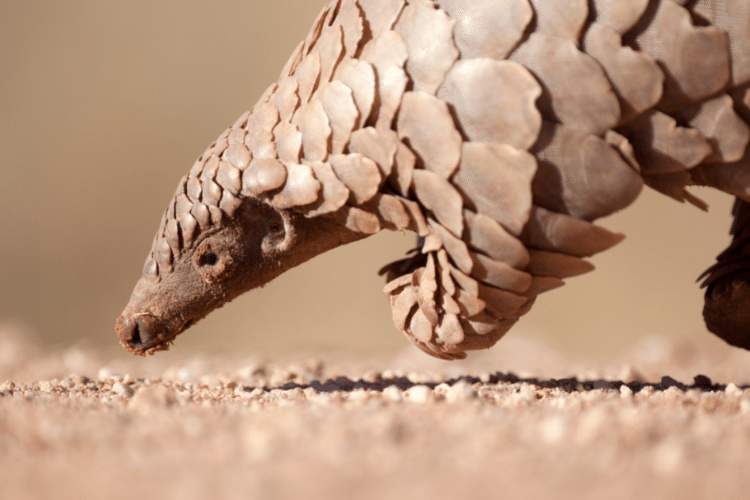 Did COVID-19 spread to humans through illegally trafficked pangolins?
Did COVID-19 spread to humans through illegally trafficked pangolins?
The wet market where the coronavirus made its jump from animals to humans was in Wuhan, the capital of the Hubei province in China, at the end of 2019. Several people at the Wuhan wet market were among the first humans to get sick.
This is not the first time this has happened.
SARS started in caged civets, small mammals sold for meat at markets and considered a delicacy in some parts of Asia.
Bird flu spread from birds to humans at similar wet markets.
Swine flu originated on factory farms and jumped from pigs to human.
Many other deadly diseases (like e.coli and MRSA) have been caused by factory farming and wet markets, as both are unhygienic practices that create unnatural environments for animals and weaken their immune systems; once they become sick it’s only a matter of time before the pathogens find a way to jump to humans – sometimes jumping from a live animal to a person nearby, while other times crossing over when the person consumes the animal’s meat.
THE LAB-LEAK THEORY
Some scientists criticize the animal transmission theory, saying it isn’t plausible, especially because no one’s been able to find a true match for the virus in any animals. While the pangolins come close at 91%, that’s simply not close enough. Remember, there are multiple coronaviruses in the world – including the common cold, SARS, MERS, and many more found within the animal kingdom – so finding a coronavirus that’s 91% similar isn’t necessarily saying much.
These skeptics also think it’s seemingly impossible for a virus to learn to spread from human to human so quickly…usually it takes time for the virus to “figure us out” after it’s made the jump from an animal species over to people.
These scientists instead point to the fact that Wuhan houses several biological research laboratories. One of these laboratories is the Wuhan Institute of Virology that conducts experiments on viruses, including coronaviruses.
A State Department fact sheet from mid-January highlights reports of sick lab researchers at the Wuhan Institute of Virology in the fall of 2019, notes the dangerous type of coronavirus research the lab was conducting and said there was also secret military activity at the lab.
It’s easy to see how the virus could have leaked from the lab to some of its employees and then disseminated even further into the community at the busy Wuhan wet market.
The most notable supporter of the lab-leak theory is former CDC director and infectious disease specialist Dr. Robert Redfield, who led the CDC from the time COVID-19 was first discovered in Wuhan through the end of Trump’s term.
“It’s not unusual for respiratory pathogens that are being worked on in a laboratory to infect the laboratory worker.”
-Dr. Robert Redfield
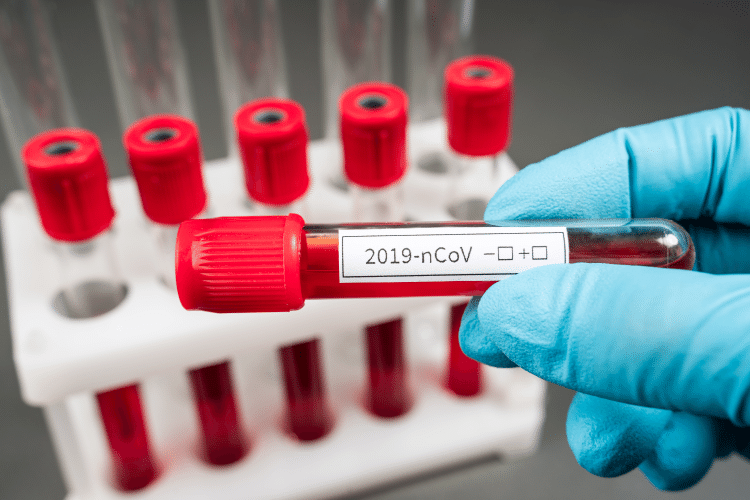
While we still don’t know which theory is right, animal-transmission or lab-leak, as Dr. Redfield says, “Science will eventually figure it out.”
Let’s hope so.
WHERE HAS COVID-19 SPREAD?
To use the proper lingo: what started off as an outbreak in Wuhan, turned into an epidemic in China, which then spread across countries and continents to become a global pandemic.
The World Health Organization officially declared COVID-19 to be a pandemic just a few months after the outbreak started to spread globally in early 2020.
While the disease has spread to almost everywhere, Italy and Spain were hit “particularly hard” in the beginning. Then the US became the leader for total # of cases, more than doubling the case load than what was seen in other countries. As the disease spread globally, Brazil and India saw a huge surge of COVID-19 patients as well.
To see the spread of disease and to stay current on the numbers, check out this tracker from John Hopkins.
HOW INFECTIOUS IS IT?
Experts are predicting COVID-19 will eventually infect 40-70% of the world’s population. Dr. Anthony Fauci, the infectious disease specialist that we all know well from White House’s Coronavirus Task Force, thinks it may also become a cyclical disease that comes back on a seasonal basis, just like how “cold and flu season” comes around every year.
So how contagious is it, really?
To know that, you’ve got to understand R0.
Infectious disease experts use a measurement called R0 (pronounced “R naught”) to demonstrate how fast a disease can spread.
R0 tells you how how many people will catch a disease from one contagious person.
For example, look at measles – the R0 of measles is 12-18, meaning each person who gets measles will infect 12-18 others, so the disease can spread very fast. Measles has been called “the most contagious virus” for that reason.
Whereas the flu R0 is calculated to be about 1.3, much less. That means if one person gets the flu, that single person will infect (on average) 1.3 other people.
Estimates for COVID-19 put the R0 at around 2-3, but the range starts as low as 1.5 and goes all the way up to 6.68. Only time will tell as researchers monitor the number of cases.
WHO’S MOST AT RISK?
While most of us can heal from COVID-19 without requiring any medical help, there are people who are at risk and may need to be hospitalized.
The most vulnerable to COVID-19…
- Have chronic respiratory problems like cystic fibrosis or COPD
- Have cancer
- Will be receiving an organ donation
Other susceptible people are…
- Over the age of 60
- With a chronic health condition including diabetes, heart disease, obesity, kidney, disease, liver disease, and lung disease
- With an autoimmune condition
- With a neurological condition like Parkinson’s or Alzheimer’s
- Taking immune-suppressing medications
- With nutritional depletion
- Smokers
For the full list regarding who’s most susceptible – go here.
Note: With regard to the list above, hemochromatosis is NOT itself considered a chronic health condition, however it can be the cause of certain chronic health conditions.
WHAT’S THE RECENT RESEARCH SHOWING US?
MEN VS. WOMEN
We’re starting to learn more about how the virus affects different groups of people – studies from China show that COVID-19 kills more men than women. This makes sense, as women historically have had a stronger immune response to diseases like this.
YOUNG VS. OLD
And while people over the age of 60 have a significantly higher risk of dying, nearly 40% of the people hospitalized from the virus are under 55, and younger people are being affected MORE than was originally predicted.
CYTOKINE STORMS
One reason why people in the “at-risk” group get dangerously sick is because of cytokine storms. NPR writes, “Cytokine molecules summon various immune cells to swoop in and attack an infection. Normally they turn on only briefly, then shut off when help arrives. But when a storm occurs, they keep sending the alarm long after it’s needed.” Essentially, a cytokine storm is the immune system overreacting to the virus, which actually causes people (even young and otherwise healthy people) to get more sick.
HOW DOES COVID-19 AFFECT PEOPLE WITH HEMOCHROMATOSIS?
With all this information coming at you – it makes you wonder how YOUR BODY is going to handle COVID-19.
Stories from the news have shown us that even in people who experience a mild-to-moderate response to the virus (vs. a severe response, which requires hospitalization), personal experiences can be vastly different. Some people get sick for weeks on end, barely able to get out of bed. Others have compared it to mild jet lag. Now we’re learning that half of people who have it might not get any symptoms at all.
You can’t help but question what, if any, health implications there’ll be for you once you’re infected.
For those of us with hemochromatosis, the unknowns of COVID-19 can be nerve-racking. We’re not sure how the infection could potentially affect us. It’s still such a new virus that doctors and researchers haven’t had time to study all the intricacies of the relationship between COVID-19 and iron.
Because the group of people with hemochromatosis is a relatively small part of the population, and it’s considered to be a very manageable disorder, we might not see much research coming out about how our little community deals with COVID-19 for awhile (if ever).
Here’s what we DO know…read part 2!
The views expressed in this post are for informational purposes only. This post is not, nor is it intended to be, a substitute for professional, medical, or nutritional advice, diagnosis, or treatment, and should never be relied upon for professional, medical or nutritional advice, diagnosis, or treatment.
No content on talorae.com, including but not limited to pictures, graphics, videos, and text, may be republished or distributed, for financial gain or not, without my written permission.
As an Amazon Associate I earn from qualifying purchases. The above content may contain affiliate links, meaning I do get a commission when you make a purchase through those links. There is no additional cost to you. Please read my disclaimer for more info.
